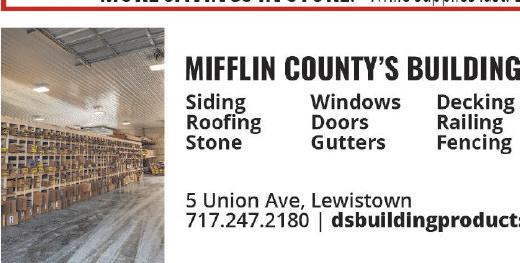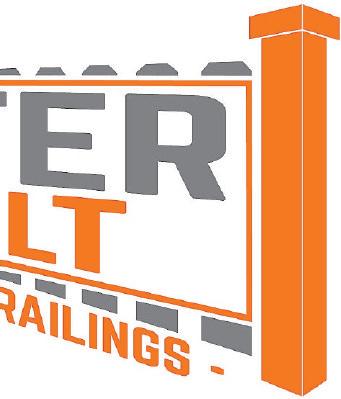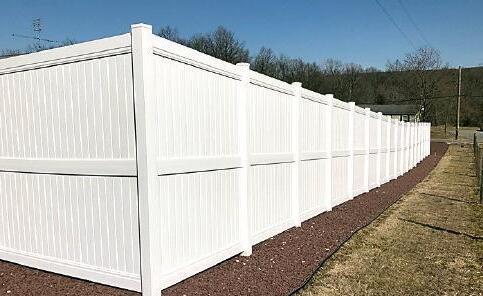









































































































Garages • Pole Barns • Workshops
Storage & Utility Sheds

Ploy Furniture & PlaySets



Play Houses • Dog Kennels Metal Roofing Sale and MORE 4597 U.S. Hwy















































































































Garages • Pole Barns • Workshops
Storage & Utility Sheds

Ploy Furniture & PlaySets



Play Houses • Dog Kennels Metal Roofing Sale and MORE 4597 U.S. Hwy




Veteran homeowners recognize the value of remodeling their kitchens and bathrooms. Kitchens and baths tend to appear dated more quickly than other spaces, such as living rooms and bedrooms, which can always be revamped with some fresh paint and new furnishings.
The home improvement pricing resource Home Guide indicates an average bathroom remodel costs anywhere from $5,500 to $15,000 depending on the size and scope of the renovation. However, a bath redo can increase a home’s resale value and can return as much as 68 percent of homeowners’ investments.
As homeowners plan their bathroom renovations, it’s a good time to consider

improvements that will improve function and add design appeal for years to come.
• Floating vanity: Add an airy feeling to the room by creating space between the vanity and the floor. A floating vanity can be a
counter with a vessel sink or even have cabinets, as long as the vanity doesn’t extend to the floor.
• Freestanding traditional sink or tub: There’s something elegant about a freestanding tub or pedestal sink. Such features
can lend a classic vibe to a space. However, freestanding fixtures also come in modern or eclectic forms, so there are options for any design style.
• Frameless showers: Switch to a walk-in shower option, which improves aesthetics and makes it easier to “age in place” in a home. Pair that frameless shower with clear glass shower doors so sightline in the space remains unencumbered.
• Natural textures: Create a calm and serene sanctuary in the bathroom with light, natural hues and materials. Nature-inspired colors on tiles, walls and vanities can add to the spa vibe.
• Dual sinks and vanities: With a double vanity,
two people can share the space and easily use the bathroom without getting in each other’s way. One vanity with two sinks works, but homeowners can create even more personal space by dividing vanities and mirrors.
• Small textured tile on shower floors: Small textures are appealing and add safety. The added texture and grouting will keep feet from slipping on wet floors. Also, opt for mold-resistant grout to make cleanup even easier.
• Special shower heads: Invest in shower heads that can run the gamut from creating steam showers to rainfall effects. Some showers will have multiple shower jets to offer an invigorating experience.
• Improve drainage: Increase the diameter of the drain pipe in the bathroom from the standard to a twoinch drain pipe. This will reduce the risk of clogs and overflow leaks.
• Install a window: Natural light and air flow can reduce the risk for mold and mildew growth, and windows add some aesthetic appeal to a space. Just be sure to choose frosted privacy glass.
Additional considerations for a bath remodel include heated floors, well-placed and attractive storage options and a toilet enclosure (water closet) for added privacy. These and other bathroom renovation ideas can add value and improve the appeal of the room.


Modern homes look a bit different than those of generations past. Rather than several small rooms divided by walls, modern homes offer open-concept floor plans. That means the boundaries between spaces are not so defined, allowing rooms and activities to blend into one another.
Formal dining rooms may or may not be part of the current home layout with regard to new construction. Many homeowners now gravitate toward kitchens with adjacent breakfast nooks that utilize large islands with stool seating that open up to family rooms. These layouts can make it more challenging for homeowners to figure out how to furnish their dining areas — how-
ever casual or formal they may be. Individuals can use these tips as a springboard for selecting the right pieces in their homes, no matter where they enjoy their meals.
the room, according to The Spruce, a home renovation resource. If the room is a multi-purpose space, consider furniture that can serve different purposes, such as a table that

Consider the scope of the room
Is it a dining room or a dining area? This will help determine decor and the formality of the pieces of furniture needed to outfit
has fold-down portions to change its size depending on the number of people dining at a particular time. You may want to include an armoire to store linens and stash away pens and











note pads for making shopping lists.
The dining table is the foundation of a dining area. After all, people need to have somewhere to sit and eat. Remember to measure the dimensions of the room carefully, as furniture can look much smaller in warehouse stores or furniture showrooms than in a home.
Consider a round or square dining table, which tend fit into rooms more easily than rectangular tables. Plus, these shapes are more conducive to conversation. Rectangular tables often leave people at the ends out of the chat.
Seating can affect the ability to move around the room. If space is at a premium, some narrow-profile chairs are a better option than larger, upholstered wingbacks. Homeowners may consider a wooden or upholstered bench on one side of the dining table to maximize seating during family events.
Pottery Barn suggests using a mix of lighting sources to create the right lighting needs in the space. Floor lamps, an overhead chandelier, wall fixtures, and natural light need to blend and be adjusted as needed. Also, choose an
overhead chandelier that complements the shape of the dining table. For example, a round fixture will look best above a round table.
An area rug can help define the dining space and set it apart from other areas in an open-concept home. An area rug also adds warmth and color when a wood table meets a wood floor; otherwise, it may look too stark.
Homeowners must take various factors into consideration when decorating a dining room. Size, purpose and style are just some of the things that merit ample consideration before furnishing a dining space.






































Electricity helps run the world, including our homes and businesses. Without electricity, we’d have no access to lighting, our interior spaces may not be heated or cooled effectively, and the computers and other devices we rely on so heavily would not run.
Even though electricity is designed to make people’s lives more convenient, it’s easy to take it for granted and become complacent about the safety needed to use it effectively. The Electrical Safety Foundation International says each year electrical malfunctions account for 35,000 home fires causing more than 1,130 injuries, 500 deaths and $1.4 billion in property damage. Since the average American home was built in 1977, many existing homes of this age and older simply cannot handle modern demand for electricity without modification.
The following are some warning signs that electrical issues could lead to bigger problems:
• Tripping of circuit breakers or blowing of fuses regularly
• Dimming of lights when other devices are in use
• Buzzing sounds from
outlets or switches
• Discolored outlets
• Seemingly underpowered appliances
Additional warning signs can include a tingling feeling when an electrical appliance is touched, rubbery smells or an aroma of burning.
Individuals can take certain precautions to ensure electrical safety at home and at work. Here are nine guidelines to follow, courtesy of the National Fire Protect.
1. Have any home you are buying or renting inspected by a qualified private inspector in accordance with local requirements.
2. When electrical work is needed, hire a qualified, licensed electrician.
3. Use only one heat-producing appliance plugged into a receptacle outlet at a time.
4. Do not use extension cords for major appliances like ovens, washers, stoves or microwaves. They should be plugged directly into a wall receptacle outlet.
5. Ground-fault circuit interrupters (GFCIs)

should be installed in kitchens, bathrooms, garages, and basements to shut off an electrical circuit when it becomes a shock hazard.
6. Extension cords should only be used temporarily. Have an electrician
install more outlets if they are needed.
7. Keep the area around the electric meter clear.
8. Make sure outdoor lights and other fixtures are rated for outdoor use.

9. Label the circuit breakers to understand the different circuits in the home and know which to turn off when electrical work is being conducted.
It doesn’t take much for an electrical issue to
become serious and start a fire or cause shocking. Treat all electricity use in a home or business seriously.



A person doesn’t have to drive far or look too closely to be inspired by holiday decor come the month of December. Enthusiastic celebrants go to great lengths to express their holiday spirit, and that typically includes decorating their home exteriors.
Home holiday decorations are a tradition in millions of households.
Though the tradition helps make this special time of year even more festive, decorating a home exterior for the holidays is not without certain safety risks. Homeowners must prioritize safety when decorating their home exteriors for the holidays. These tips can ensure the holiday season is as safe as it is special.
• Never decorate alone. The buddy system should be employed when decorating a home for the holidays. No fewer than two people should decorate a home. A second person can ensure a ladder remains steady
while hanging lights and can help lift potentially heavy lawn decorations,
American Red Cross urges individuals to use only decorations designed for out-
small spaces. In addition, the Red Cross recommends homeowners who intend to

thus reducing the risk for injury.
• Use the appropriate decorations and tools. The

door use when decorating their home exteriors. Indoor lights should never be strung outdoors, even on
use nails or hooks to hang decorations first confirm they are insulated, which can help to avoid electrocu-



tion and reduce fire risk.
• Plug decorations into the correct outlets. The energy experts at FirstEnergy note that outdoor lights and inflatable decorations should be plugged into circuits protected by ground fault circuit interrupters (GFCIs). Older homes may not be equipped with such outlets, particularly on their home exteriors. Replacing existing outlets with GFCIs is a quick and relatively inexpensive job that a professional electrician should be hired to handle before decorating for the holidays.
• Utilize a timer for exterior lights. Lights should be not kept on overnight, which can be costly and pose a safety hazard. Utilize a timer so lights come on at night and turn off around bedtime, if not earlier.
• Inspect decorations. Exterior string lights and other plug-in decorations should be inspected at the beginning of each sea-
son to ensure there are no frayed or cracked wires. Damaged wires pose a significant fire hazard, so any damaged strands should be discarded and replaced.
• Pick the right day to decorate. Consult the weather forecast prior to decorating the exterior of a home. Pick a day when efforts to decorate won’t be compromised by wind, rain, snow, or other inclement weather. If it’s already snowed, avoid decorating until the snow has melted, as there could be ice lingering beneath the snow. It’s also unsafe to work on a snow-covered roof. Decorate on a day with ample daylight and pause decorating if weather takes a sudden, unexpected turn for the worse.
It can be fun to decorate a home’s exterior for the holiday season. But homeowners must prioritize safety and take every step necessary to reduce their risk for accident or injury.
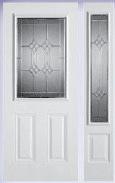














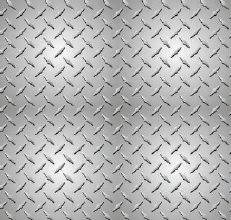





Certain homes have an undeniable wow factor. That instant appeal tends to be noticeable the moment visitors pull up to the curb, and it might be a byproduct of homeowners’ willingness to embrace the latest exterior design trends.
Trends come and go, but recognition of the current fashions can help homeowners create that highly sought-after wow factor. The following are some recent trends in home exteriors that have helped homeowners set their properties apart.
Wood
Natural wood has undeniable appeal, and it hasn’t only found newfound devotion among home interior decorators. Natural wood garage doors create a sense of warmth and can set a home apart from others with steel doors, which tend to be the most popular garage door material. In addition to the garage door, natural wood entry doors and wood decks are popular ways to impart this classical, warm look to a home’s exterior.
Painted brick
Like natural wood, brick is a traditional material that’s both sturdy and classical. But homeowners can add character to brick with a coat of paint, which has become a popular trend in recent years. Light tones tend to be most popular when painting bricks. The experts at Better Homes & Gardens
as an extension of indoor living spaces. The home improvement experts at HGTV note that recently homeowners have looked to create covered outdoor rooms that can be enjoyed more frequently than patios or decks that are not protected from the elements.
note that this could prove a long-term commitment if homeowners so desire, as a properly painted brick exterior could last as long as 20 years.
Hardscaping isn’t a new trend, but it has been trending in recent years. Hardscaping is an umbrella term that includes everything from outdoor living rooms to incorporating natural stone into a landscape. Outdoor living rooms are one hardscaping trend that has become increasingly popular of late. These spaces serve
It makes sense that individuals looking to spend more time enjoying their properties outdoors would want more lighting outside. Ambient outdoor lighting can be utilized throughout a property. Such lighting can light up walkways and driveways and be used to light up landscaping features like trees and gardens. Home design trends tend to be fickle. But recognition of the current trends in exterior home design can set homes apart and turn properties into awe-inspiring places to enjoy the great outdoors.

































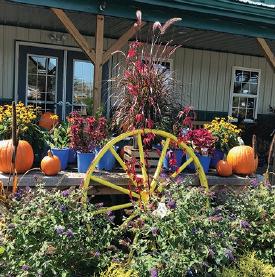







A warm fire can make even the coldest winter day more enjoyable. Fireplaces may not get much use in spring or summer, but come late fall and throughout the winter, the fireplace can be a great place for families to gather.
Before fireplace season hits full swing, homeowners might want to brush up on a few fireplace facts so they can safely enjoy nights spent sitting by the crackling flames.
The Chimney Safety Institute of America advises homeowners with fireplaces to hire a CSIA-certified chimney sweep to clean their fireplaces. After a lengthly period of non-use, various issues could be affecting the chimney, many of which might not be noticeable to an
untrained eye. Professional, certified chimney sweeps have extensive knowledge of fireplaces, making them valuable resources who can
used. The National Protection Agency recommends that chimneys be swept at least once per year.
A full inspection of the
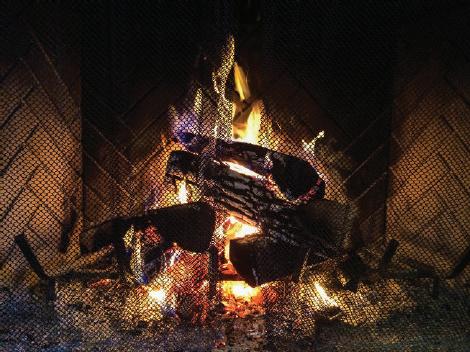
let homeowners know if any safety issues developed since fireplaces were last
chimney might be in order as well. Chimney service technicians will conduct


thorough examinations of readily accessible portions of the chimney exterior and interior and accessible portions of the appliance and the chimney connection. The CSIA recommends that homeowners who plan to use their chimneys as they have in the past request a Level 1 inspection, which will examine the soundness of the chimney structure and flue as well as the basic appliance installation and connections. Technicians also will verify if the chimney is free of obstruction and combustible deposits.
Homeowners also should inspect their chimney dampers before lighting their first fires of the season. Dampers should open and close smoothly. If not, a service technician can help fix or re-
place the damper. Firewood is another thing homeowners must consider before lighting their first fires of the season. The CSIA says that well-seasoned firewood works best, noting that wood that is not well-seasoned will produce more smoke than heat. In addition, the home improvement resource This Old House recommends using dense wood that’s been split and stored in a high and dry place for at least six months. Oak is an example of dense wood that, when stored properly, can make for an enjoyable fireplace experience. Avoid softwoods like pine. Pine can produce a lot of creosote, which is a byproduct of wood combustion. Creosote is highly flammable, and as it builds up in a chimney,
the risk for a chimney fire increases. Choosing the right wood, making sure it’s well-seasoned and having a chimney professionally cleaned can reduce the risk of a creosote-related chimney fire. A Level 1 inspection should determine if there are potentially dangerous levels of creosote deposits in the chimney.
Before nestling up to a fireplace this winter, homeowners should consider a host of factors and safety measures to ensure their fireplaces are safe and ready for the season ahead.
Your favor ite advice columns online ever y day
ALL ACCESS • The Sentinel
























The kitchen is a busy room in many homes. That popularity likely has something to do with why so many homeowners spend sizable sums renovating their kitchens. According to highlights from the 2022 U.S. Houzz Kitchen Trends Study, the median spend on major kitchen remodels grew by 14 percent from the previous year, and minor remodels increased by 25 percent. Spurred on by increased time spent at home during the pandemic, the main impetus for kitchen remodels according to the study was that homeowners wanted to make these improvements all along and finally had the time and means to do so.
There are many aspects of a kitchen that homeowners can change. Houzz found 94 percent of renovators either fully or partially replaced cabinets in their improvement plans. Cabinets are a major component of kitchen layouts. Cabinets help to establish the aesthetic of a kitchen and serve a
useful function, providing necessary storage space to ensure the room does not appear cluttered.
Homeowners have different options when it comes to cabinet renovations, and they may need to decide if they need to replace or reface their cabinets.
Replacement
Cabinet replacement involves removing all of the existing cabinets before new cabinets are leveled and installed. According to the home improvement resource The Spruce, homeowners can expect to pay between $13,000 and $30,000 for contractor grade cabinets. Cabinet replacement is a good idea when homeowners want to add more cabinet space or create a new layout in the room.
Cabinet refacing is less messy and less disruptive than replacement. All cabinets remain the same size and in the same location. The cabinet boxes must be in good shape to facilitate a refacing. The process involves installation
of new drawer fronts and cabinet doors, as well as veneering of the cabinet boxes. New hardware typically is installed as well. The insides of the cabinets typically remain the



same. The Spruce says cabinet refacing can be 30 to 50 percent cheaper than a replacement.
Most people call in professionals to change their cabinets. Cabinet replacement
can be a do-it-yourself job, but it involves measuring and ensuring everything fits and is leveled appropriately. Homeowners who choose to reface their cabinets themselves may opt to paint or restain. Wood veneer or a new door and drawer panel installation can be complicated and is best left to qualified contractors.










































Home renovations provide a host of benefits. Such projects can increase resale value and improve on the safety, aesthetics and functionality of a home.
Some homeowners may employ the mantra “go big or go home” when they embark on home improvements, thinking that only the largest renovations produce noticeable change. But that’s not the case. Various smaller renovations can provide a lot of bang for homeowners’ bucks as well.
• Countertops (and hardware): A complete kitchen overhaul may stretch some homeowners’ budgets. However, changing an older countertop for a new material can provide the facelift a kitchen needs. And while changing the cabinets may be homeowners’ ultimate goal, swapping hardware in dated finishes for newer handles and pulls can provide low-cost appeal.



timate what a change in lighting can do. When rooms or exterior spaces are illuminated, they take on entirely new looks. It’s worth it to invest in new lighting, whether it’s a dramatic hanging light over the dining room table or task lighting in dim spaces.
• Weatherproofing: Improving windows, doors, weatherstripping, and insulation in a home can offer visual appeal and help homeowners save money. The initial investment may be significant, but those costs will pay off in energy savings. According to One Main Financial, space heating is the largest energy expense the average American homeowner has, accounting for around 45 percent of all energy costs.
and cabinets can corral shoes, umbrellas, hats, bags, and much more.
• Accent updates: Any space, whether it’s inside or outside a home, can get a fresh look with new decorative accents. Invest in new throw pillows and even slipcovers for living room sofas. Use new tile or paint the brick on a fireplace in a den, then update the mantel with decorative displays. Purchase wall art that can bring different colors into a room. Change the cushions on deck furniture and buy color-coordinated planters. These subtle changes will not cost as much as full-scale renovations, but they can still help homeowners transform their homes.
FIND WHAT YOU’RE LOOKING FOR

• Lighting: Homeowners should not underes-
• Paint: Painting a space is an inexpensive improvement that adds maximum impact. Paint can transform dark and drab rooms into bright and airy oases. Paint also can be used to create an accent wall or cozy nooks. Homeowners also can showcase their personalities with their choice of paint colors.

• Mudroom: Turn an entryway into a more functional space with the addition of cabinets, benches or custom-designed storage options that perfectly fit the area. Cubbies








Individuals who don’t live near the equator or in another warm climate know that winter will rear its chilly head this year. Cold temperatures and snowy conditions may be excellent for skiing and sledding, but gardeners recognize these conditions are not ideal for their plants.
The inevitable slowing of activity in the garden during fall marks a time to shift attention from constant plant care to preparing the landscape for next season. It may be tempting to simply let Mother Nature take over, but a little pre-winter TLC can ensure gardens make it through winter unscathed.
Remove spent plants
Decomposing organic material is the basis for compost and other fertilizers. However, vegetable plants that are left to sit can lead to decay in the garden. Decaying plants can serve as hosts for pest populations and diseases. Rotting vegetables also can drop unwanted seeds into the soil, which eventually can strip nutrients that normally would go to next year’s crops.
Ornamental plants and perennials can be cut back in fall. Cut down stalks and remove leaves.
Plant a cover crop
The gardening resource
This Is My Garden recommends planting a cover crop to set the stage for a successful spring. A cover crop protects the soil and can return nutrients to it. When the soil is bare during winter, weed seeds can easily blow in and lie in wait , ultimately becoming a problem during the ensuing year. Cover crops can include clover or field peas, which will increase the levels of available nitrogen.
Amend the soil
Fall is a perfect time to add soil amendments, such as manure and compost. These fertilizers will add nutrients and break down gradually, enriching the soil over the winter.
Replenish mulch
Gardeners may have added mulch around shrubs and other areas of the landscape early in the season because it is attractive. But mulch also does much to reduce water loss and protect the soil from erosion. It may inhibit weed growth as well. Replacing mulch when the mercury drops can insulate the soil, which helps to regulate soil temperature. A thick layer of mulch around root vegetables left in the garden can offer protec-

tion against hard frosts.
Divide bulbs
Divide plant bulbs and plant them where you want flowers like daffodils and tulips to grow in the spring.

Prune dormant plants
Wait until plants are dormant to prune them and adjust their shape. Most shrubs and trees should be pruned in late winter, right before new growth.
Move potted plants
Bring delicate plants into a sheltered area, such as a greenhouse or indoor garage, so they can continue to thrive during the winter.
Fall and winter still provide opportunities to spend time in the garden. At this point in the year, gardeners can prepare landscapes for the next season.











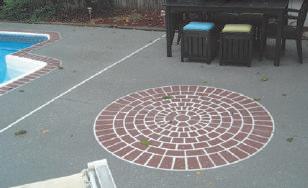

Fall is a great time to tackle projects around the house. The weather each fall allows homeowners to make improvements to their homes’ exteriors without worrying about extreme heat or cold, while interior projects like painting are made easier because homeowners can open the windows to allow for proper ventilation. Fall also marks a great time to prepare for upcoming projects that can make winter work that much easier. For example, fall is a great time to take stock of your gutters so you can address any issues before leaves begin to fall or the first snowstorm
touches down. Compromised gutters can contribute to water issues in basements and adversely affect a home’s foundation if not addressed immediately, so it behooves homeowners to learn the signs that gutters are in need of repair or replacement.
• Gutters hanging off the home: Gutters were once installed predominantly with spikes. However, many industry professionals now install gutters with hanger brackets. Why the change? Spikes loosen over time, leading to the gutters hanging off the home. That can contribute to serious issues if

left untreated. Gutters hanging off the home need not necessarily be
replaced, but rather secured to the home, ideally with hanger brackets instead of spikes. Brackets hook into the front of the gutter and are then screwed into the fascia of a home. A professional who specializes in gutter repair can perform this task relatively quickly, and it’s an inexpensive yet highly effective solution.
• Gutter separation: Gutters that are no longer fastened together can leak and contribute to issues that affect the home’s foundation, siding and appearance. Clogs and the accumulation of debris can cause gutters to separate because they are not de-
signed to hold too much weight. Replacement of separated gutters may or may not be necessary depending on how big the problem is and the condition of the existing gutters. If replacement is not necessary, separated gutters may be remedied by securing the joints, another relatively simple and inexpensive fix.
• Peeling exterior paint: Paint that appears to be peeling off of your home may indicate that water is seeping over the edge of the gutter closest to your home. When that happens, water is coming down the side of the house, causing the paint to peel. In such instanc-
es, replacing the gutters is often necessary.
• Basement flooding: Not all signs of deteriorating gutters are outside a home. Many a homeowner has been flummoxed by flooding in their basements, and such flooding can be caused by aging, ineffective gutters. That’s because deteriorating gutters sometimes allow water to leak near the foundation of a home, contributing to basement flooding. Fall is an ideal time to inspect gutters and have any issues fixed before leaves begin to fall or harsh winter weather arrives.



















































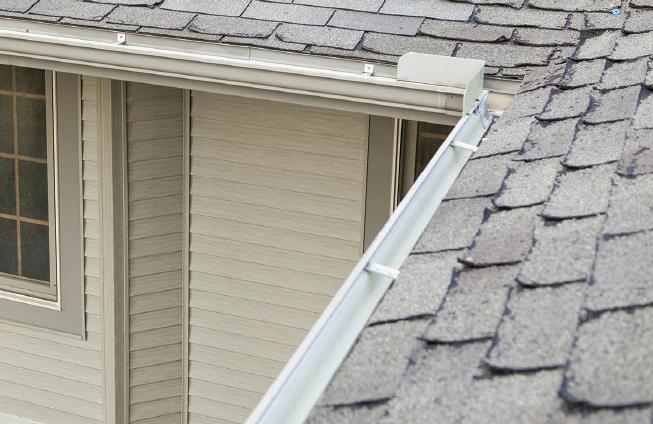
Certain home renovation projects are more glamorous than others.
A remodeled kitchen is sure to garner its share of “oohs and aahs,” while a newly paved driveway is much less likely to dazzle guests.
A gutter replacement is another job that might
not have the wow factor.
But fully functioning gutters are a must and can help to prevent potentially expensive roof damage. Gutters rarely draw attention, but homeowners can keep an eye out for signs that indicate gutters need to be replaced.
Signs gutters should be replaced Various signs indicate it’s time to replace existing gutters. Homeowners should act promptly if any of the following signs arise, as poorly functioning gutters can make it hard for water to get into the downspouts, ultimately pushing it backward and likely underneath roof shingles, where the result can be costly water damage.
• Peeling paint
• Cracks
• Pooling water in the gutter
• Mildew in the gutter, which can sometimes be seen even from the ground
• Water damage: Water
damage on the gutter can be limited to certain spots and will be noticeable on the underside of the gutter
• Soffit damage
• Sagging gutters
• Detached gutters, which can be detached from other pieces or the house
• Rust
Who should replace gutters?
Many home improvements can be completed successfully by skilled do-it-yourselfers, but a gutter replacement is best left to the professionals. Homeowners who live in single-story homes may be able to replace gutters on their own, but the issues that
can arise when gutters are not functioning at optimal capacity make this a job best suited to professionals, even in residences without high roofs. Some gutters may be under a manufacturer’s warranty, so homeowners can check to see if their gutters qualify for a free upgrade. Experience is one of the best reasons to work with a professional gutter installation team. Experienced professionals can identify which gutters are the best fit based on a host of factors, including the pitch of the roof, local conditions and the size of the house. In addition, gutter installation requires the use of various tools that many
DIYers may not have on hand, which can cut into the cost savings of doing the project yourself.
Homeowners also should not underestimate the challenges of working on ladders that are high up off the ground. Professionals are accustomed to such challenges, while DIYers may not be comfortable or used to climbing ladders with materials and tools in hand.
A gutter replacement is a worthwhile investment that can ensure rain water efficiently and effectively runs through gutters and away from the roof. Leaving this task to the professionals can ensure the job is done right.



Houses typically feature various areas that are traditionally designed for storage, such as garages, basements and attics. However, with some renovation, these spaces can be transformed into livable areas. Homeowners who would like to convert
attics into livable spaces need to take certain things into consideration before starting an improvement project. While the attic may seem like it has plenty of room and is structurally sound enough to walk in, that’s not necessarily so. To be converted into usable living space, an attic must be brought up to the standards of modern building codes, according to the design experts at Board & Vellum. Retrofitting beams and insulation can eat up available space in an attic. Thus, it is best to consult an expert to see if an attic can be converted. Furthermore, an attic that was not initially designed as a room when the house was built can add extra “load” upstairs if it is converted. That could present certain structural problems. That means a structural engineer also must be consulted to see if adding beams, flooring and drywall will necessitate other
changes elsewhere in the home to accommodate the extra load. In order to have a functional attic room, building codes will dictate that it needs to be accessible by a full-size staircase. Also, it will need to have another exit in case of an emergency so that will likely be an accessible window, according to the home information site The Fill. Homeowners’ budgets and renovation plans will need to factor into these considerations. Homeowners also are advised to check local permits to
determine what else may be required to go forward. It is best to follow the rules. Lack of a permit for work can affect the ability to sell a home down the line. Individuals also should plan for heating and cooling upgrades as the home will need to have ductwork installed in the attic, or at the least, a stand-alone heating and cooling unit. As heat rises, it can get quite warm in an attic, so ventilation and comfort should be considered. The attic will need to be wired for electricity for light-
ing and other needs. Air sealing and additional insulation can the attic space more comfortable as well. Consult with a qualified electrician and an HVAC technician and have an energy audit done to discuss needs.
Attic renovations can give homeowners more space in their homes, which can be used as offices, bedrooms or cozy corners. This is no small undertaking and all of the right steps need to be followed to ensure a legal, safe and successful renovation.



















Home renovation projects are significant undertakings. It is common for homeowners who may not have the time nor the expertise to do the work themselves to call in professionals to tackle these jobs.
According to the home improvement resource HomeGuide.com, for a bathroom remodel, which is one of the more popular improvement projects, installation and labor accounts for 10 to 25 percent of the total project cost. In general, many contractors pay themselves $300 to $500 for an hourly rate, while helpers may make $150 per hour.
Materials used account for the other components of an overall project cost. Homeowners negotiate the best rates possible by obtaining a number of bids from contractors, spelling out both labor and material costs and determining their best option. Here’s how to compare bids.
Check as many reviews as possible Go online, ask friends for recommendations, or rely on the Better Business Bureau to find reliable contractors. A contractor who seems too good to be true will not
necessarily be so, but it’s still best to vet each professional thoroughly prior to signing a contract. Cost basis vs bid basis
Certain contractors will produce an estimate based on the best guess of the cost of supplies then add on a flat fee or percentage for their services. This is called a cost basis bid. Others will create a bid that includes all their anticipated supply and labor costs, known as a bid basis bid. Know what you’re getting to make the most accurate comparison.
Create a master itemized checklist
It’s easy to explain the project differently from one contractor to another when doing so verbally. That may result in a different plan and price. Rather, make a checklist of what you want done and have several copies to give to the contractors with whom you meet. This makes it easier to compare costs line by line.
Have specific materials in mind
Make sure bids are based on the same materials and tasks. For example, if you’re comparing window replacement quotes, be sure that
each quote is based on the same window material and coating. Vinyl replacement windows may not cost the same as fiberglass or wood. It is much easier to compare pricing when contractors provide estimates reflecting the same materials.
Small versus big contracting companies
Some bids may differ based on the manpower of the company. One contractor may view a project as an easy one that can be slipped right into the schedule. Another may have to devote more time and effort if it is being undertaken by one or two people. This can affect cost in the quote. Furthermore, a contractor who does a lot of advertising in print, television or online, or has an office or warehouse space, may have extra overhead costs that are passed on to the customer.
Doing your own demo
Figure out if the contractor will allow you to perform a portion of the tear-out, clean-up or other tasks to save on labor costs. Make sure this is included in the bid.











Comparing contractor work bids can be tricky, but it helps homeowners know they’re getting the best value for their money. Contracts provide protection for all parties signing on the dotted lines. According to LegalMatch. com, a contract is an agreement between two parties that cre-
ates a mutual legal obligation. Oral contracts are possible, but written contracts are preferred for a number of reasons. Any time a person sets out to do a home improvement project that involves the use of contractors and other professionals, he or she should have a contract drawn up.
A contract can ensure that the work will get done safely, within a given time frame and according to specifications. A contract should contain certain details.
1. A defined scope
of work: Here is where the scope of the job should be spelled out in detail. This portion should include the materials being used, what the homeowner has requested, special


details, and who will take care of each facet of the job. For example, if the homeowner will be providing the materials, it should be noted here.
2. Procedure for changes: To be comprehensive, renovation contracts should note the process that will be followed for any alterations or additions to the project.
3. Floor plans: In some instances, the contract will include floor plans, architectural drawings and other details.
4. Indemnity clause:
The contract should include a clause that indemnifies the property owner against legal liability should any damages or injuries take place on the property.
5. Work schedule:
The contract also should include a work schedule that identifies the re-




quested start time and estimated end time for the project. Parties should understand that inclement weather or other delays could affect the schedule.
6. Cost: The contract should reference the agreed upon bid price, highlighting the agreements for procedures if additional materials are needed or if the job runs long
7. Warranty: If a warranty is being offered, the details should be included in the contract. Homeowners should expect a reasonable one-year warranty to cover any defects in the contractor’s work. Renovation contracts are essential any time there is an agreement between homeowner and contractor. Good contracts will include various components.







Home improvement projects can range from relatively inexpensive undertakings to complex endeavors that cost homeowners thousands of dollars. In an effort to make expensive projects more affordable, homeowners may look for ways to pitch in, and doit-yourself demolition is a common way to cut costs. Due to geographical fluctuations in price as well as the scale of a project, it’s hard to pinpoint just how much homeowners can save by doing demolition work themselves. HomeAdvisor estimates that the average small interior dem-
olition project costs just over $3,000, though more significant demolition projects can cost considerably more than that. Given the cost, it’s no surprise that so many homeowners volunteer to do demolition on their own. Though it’s possible to do so safely, homeowners can take steps to determine if it’s in their best interest to take on a DIY demolition or leave it to the professionals.
• Conduct a cost analysis. Demolition projects seem simple, but they often require the use of equipment most homeowners don’t have on hand. Rentals can be considered in such instances, but the cost of renting equipment can reduce the amount of money homeowners are saving by going it alone.
For example, homeowners may be able to pull up vinyl or tile flooring on their own, but not all floors are installed the same. Some floors may have been glued more effectively than others, making it hard and/ or time-consuming to pull them up by hand. A walk-behind floor scraper can make it easier to remove such floors, but that equipment must be rented.
A cost analysis comparing the contractors’ demolition cost estimate and the cost of DIY, complete with equipment rental projections, can give a more accurate picture of how

much money homeowners will save by going it alone. If the savings of DIY are negligible, homeowners should probably let the contractor handle the demo.
• Speak with your contractor. Prior to saying they’ll do the demo work on their own, homeowners should speak with their contractors to get an accurate idea of what the project will entail. Demolition projects may seem simple enough, but contractors can illustrate the correct way to do things so as to minimize potentially costly damage. Some contractors may offer to help homeowners start the demo project and then leave them to their own devices once they get a knack for what to do. Once homeowners see what it will take, they can then decide if DIY is best for them.
• Enlist help. No DIY demo should ever be done alone. The risk for accident and injury is simply too great for homeowners to go it alone.
Homeowners who can’t enlist some volunteers to pitch in should leave the job to the professionals.
DIY demolition can save homeowners a lot of money. But such projects are not necessarily as simple as they seem. Homeowners should take steps to see exactly what they’re getting into before they volunteer to take on demo duty.






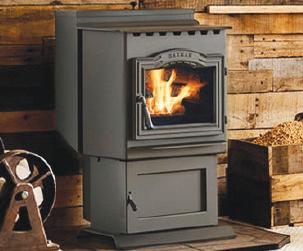

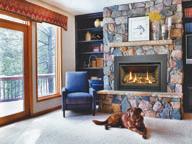


Safety may not be on the minds of people when they gather equipment and cleaning supplies to clean their homes, but even seemingly innocuous items can be dangerous. The National Safety Council warns that accidents and deaths often occur when least expected — including when doing chores around the house.
The online safety advocate SafeWise says that more than 160,000 Americans die as a result of an accident every year, and household injuries account for 75 percent of those deaths. It’s important to be careful when cleaning around the house, and part of that caution includes recognizing where hazards may be lurking. Here are ways to prevent cleaning and organizing accidents.
Cleaning chemicals are often effective because they employ bases or acids to produce cleaning actions. By themselves, many of these products are generally safe to use provided users adhere to the usage instructions
and precautions. However, when mixed together, certain cleaning products can be extremely hazardous. According to
cleaners, vinegar and mold removers. Products containing bases include, bleaches, glass cleaners, and drain cleaners. Mix-
ries. Be especially careful when climbing ladders, and do not lean too far to either side. If possible, have someone hold the
Moving furniture or rearranging storage boxes can strain the back and

Velocity EHS, an environmental, health, safety, and sustainability advisement company, users should never mix products containing acids and bases. Common cleaning products containing acids include tub and tile
ing these products can produce toxic gases, intense heat or even explosions.
Avoid falls
Falls are a major contributor to home inju-
ladder steady. Wear nonskid shoes and go slowly. Do not climb on furniture or stack items to reach high spots like top shelves, as this can create a precarious situation.
other muscles. Use proper lifting techniques, which include lifting with the legs while keeping the back straight. If the item is too heavy, wait and ask for help.
Wear masks and safety gear
Whether dusting off the ceiling fan, cleaning out the crawlspace or removing debris from gutters and downspouts, protect the eyes, hands and lungs by wearing the right gear. Safety goggles, durable gloves and a dust mask are must-have cleaning supplies.
Remove supplies promptly
The NSC says about 10 people die from drowning every day in the United States. Children between the ages of one and four are at greatest risk. Do not leave cleaning buckets filled with water unattended, and make sure to clean up any supplies used right after cleaning to prevent injuries.
Cleaning and maintenance keep homes looking great. Homeowners should always keep safety in mind when cleaning around the house.






Home renovations can improve a home in many different ways. Modifications to kitchens and bathrooms have long been popular projects, but are they the most popular renovations? According to data from Realm, which analyzed the top 10 most popular projects from roughly 2.8 million listings and permit fil-
ings in the United States in 2022, certain projects are more popular than others. Nationally, the most common home renovations include interior painting, exterior painting, finishing a basement, installing or replacing windows, and bathroom remodeling. Houzz polls have unveiled that renovating kitchens and
bathrooms, new windows and porches, balcony and deck projects are among the most popular. According to the Canadian lifestyle resource Icy Canada, which culled various data points and sources, window and door upgrades, kitchen and bath remodels and deck projects are the most popular renovations in Canada.

